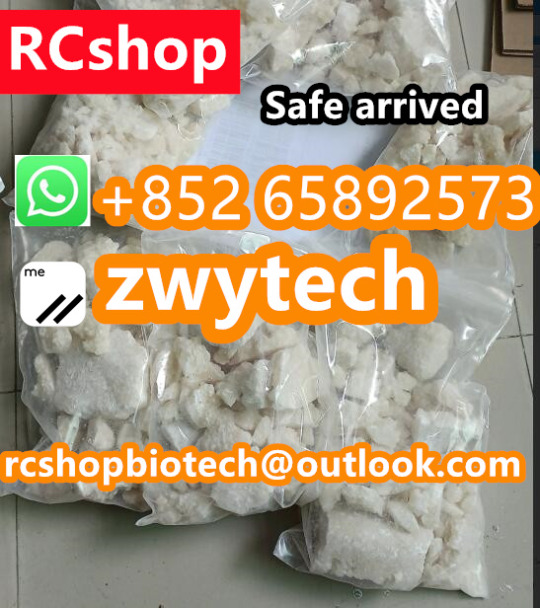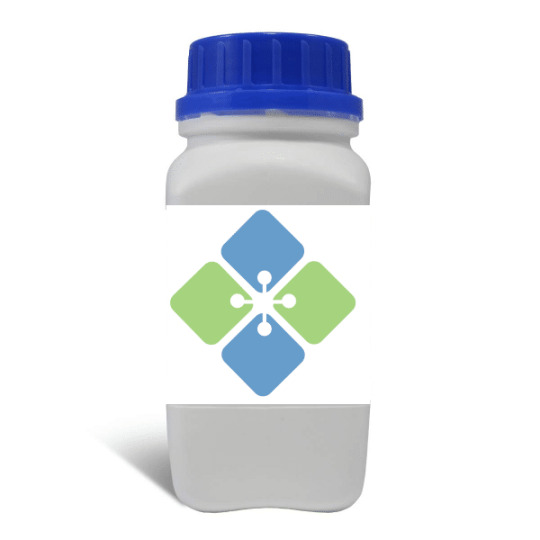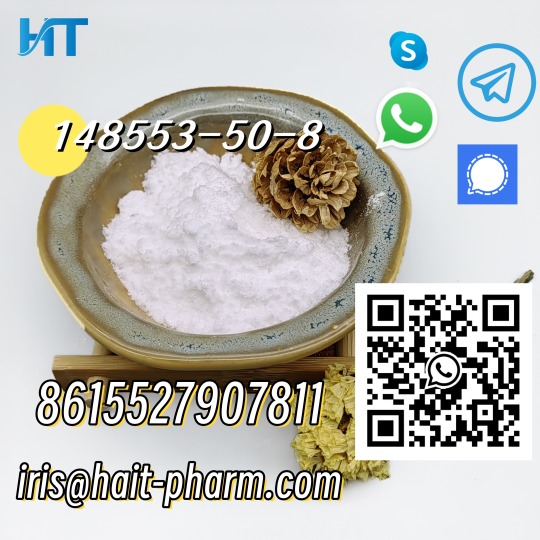#pyrrolidine
Text
Pyrrolidine CAS:123-75-1 Factory supply best price
Factory price Free of shipping customs risk Canada EU Mexico Netherlands
100% Quality satisfication guaranteed
24/7 online service
Adequate stock always.
Email: [email protected]
Whatsapp:+8617702748078
wickr: mikechinaraws
www.chinaraws.com
www.wowraws.com
0 notes
Text
Polyvinyl Pyrrolidine K-25 (PVP)
Polyvinyl Pyrrolidine K-25 (PVP) is a versatile compound with various functional applications. It serves as a clarifying agent, effectively improving the transparency and purity of various substances. PVP acts as a stabilizer, aiding in maintaining the stability and consistency of mixtures and solutions. Additionally, it functions as a bodying agent, enhancing the texture and thickness of certain products.
PVP is commonly utilized as a tableting adjunct in pharmaceuticals, where it assists in the cohesive binding of tablet ingredients, ensuring the integrity of the final product.
0 notes
Text
CAS 123-75-1 Pyrrolidine supplier in China ( whatsapp +86 19930503252
CAS 123-75-1 supplier in China ( whatsapp +86 19930503252
Hebei Guanlang Biotechnology Co,.LTD are one of the largest Pyrrolidine supplier in china CAS 123-75-1,if you need Pyrrolidine , please contact us freely for sample checking first. We offer best quality and safe shipping DDP shipping
Pyrrolidine China factory -hebei guanlang biotechnology Co,.LTD build our own Pyrrolidine factory in China to produce the Pyrrolidine ,each day can produce 10 ton
since 2005,we are the biggest Pyrrolidine supplier in China , we have the new technology to produce the best quality Pyrrolidine in China , based on our new technology and Excellent technical worker , we become the professional Pyrrolidine supplier in China

0 notes
Text




Contact supplier:
Email:[email protected]
Whatsapp:+852-65892573
Wickr :zwytech
#We Supply 100% safe door to door shipping Pharmaceutical intermediates as below#CAS 5449-12-7 BMK Glycidic Acid (sodium salt)#CAS 80532-66-7 BMK methyl glycidate#CAS 71368-80-4 Bromazolam#CAS 110-63-4 1#4-Butanediol Bdo#CAS 28578-16-7 pmk glycidate pmk Oil#CAS 593-51-1 Methylamine hydrochloride#CAS 20320-59-6 Diethyl(phenylacetyl)malonate BMK oil#CAS 52190-28-0 New pmk glycidate Powder#CAS 1451-82-7 2-bromo-4-methylpropiophenone#CAS 69673-92-3 Chloro-1- (4-methylphenyl) -1-Propanone#CAS 79099-07-3 N-(tert-Butoxycarbonyl)-4-piperidone#CAS 4 -Piperidinediol hydrochloride#CAS 125541-22-2 1-N-Boc-4-(Phenylamino)piperidine#CAS 236117-38-7 2-iodo-1-p-tolyl-propan-1-one#CAS 124878-55-3 2-iodo-1-phenylpentan-1-one#CAS 86-29-3 Diphenylacetonitrile#CAS 925-90-6 Ethylmagnesium Bromide#CAS 123-75-1 Pyrrolidine#CAS 1009-14-9 Valerophenone#CAS 5337-93-9 4-Methylpropiophenone#CAS 4584-49-0 2-Dimethylaminoisopropyl Chloride Hydrochloride#CAS 288573-56-8 2-BOC-4-(4-FLUORO-PHENYLAMINO)-PIPERIDINE#CAS 2 -Chlorophenyl)-2-nitrocyclohexanone#New BMK Powder cas 25547-51-7/10250-27-8
1 note
·
View note
Text

CAS No : 401566-80-1 | Product Name : tert-Butyl (2S,4S)-4-[4-(3-Methyl-1-phenyl-1H-pyrazol-5-yl)piperazin-1-yl]-2-[(1,3-thiazolidin-3-yl)carbonyl]pyrrolidine-1-carboxylate | Pharmaffiliates
Buy highly pure tert-Butyl (2S,4S)-4-[4-(3-Methyl-1-phenyl-1H-pyrazol-5-yl)piperazin-1-yl]-2-[(1,3-thiazolidin-3-yl)carbonyl]pyrrolidine-1-carboxylate, CAS No : 401566-80-1, Mol.Formula : C27H38N6O3S, Mol.Weight : 526.69 from Pharmaffiliates. Login as registered user for prices, availability and discounts.
#CAS No : 401566-80-1#pharmacopeial impurities#pharmaffiliates#pharma manufacturing#PA 47 01650#Product Name : tert-Butyl (2S#4S)-4-[4-(3-Methyl-1-phenyl-1H-pyrazol-5-yl)piperazin-1-yl]-2-[(1#3-thiazolidin-3-yl)carbonyl]pyrrolidine-1-carboxylate
0 notes
Text

Pyrrolidine CAS 123-75-1 Manufacturer in China WhatsApp/Wechat/Phone:+8619930504284
CAS No.:123-75-1
Other Names:Pyrrolidine
MF:C4H9N
EINECS No.:204-648-7
Place of Origin:hebei, China
Type:Syntheses Material Intermediates
Purity:99%
Brand Name:Guanlang
Model Number:123-75-1
Appearance:Colorless transparent liquid
Sample:available
Package:25KG Drum
SHELF LIFE:2 years
Storage:Cool Dry Place
Hi , this is Helen (WhatsApp+8619930504284 ), we have bulk 99% Pyrrolidine CAS 123-75-1 in stock now. usually package is 25kg per carton. It is popular selling in market. If you want to find Pyrrolidine CAS 123-75-1 supplier or factory.You can contact me for free. We have good quality and factory price with top quality. we have some buyers who purchase Pyrrolidine CAS 123-75-1 and other similar products. if you are interested in it,contact me.
HeBei GuanLang Biotechnology Co.,Ltd
Wickr:helennie
WhatsApp/wechat:+8619930504284
E-MAIL: [email protected]
2 notes
·
View notes
Text
0 notes
Text
Tirzepatide CAS#: 2023788-19-2

IdentificationPhysical DataSpectraRoute of Synthesis (ROS)Safety and HazardsOther Data
Identification
Product NameTirzepatideIUPAC Name20-amino]-2-methylpropanoyl]amino]-4-carboxybutanoyl]amino]acetyl]amino]-3-hydroxybutanoyl]amino]-3-phenylpropanoyl]amino]-3-hydroxybutanoyl]amino]-3-hydroxypropanoyl]amino]-3-carboxypropanoyl]amino]-3-(4-hydroxyphenyl)propanoyl]amino]-3-hydroxypropanoyl]amino]-3-methylpentanoyl]amino]-2-methylpropanoyl]amino]-4-methylpentanoyl]amino]-3-carboxypropanoyl]amino]hexanoyl]amino]-3-methylpentanoyl]amino]propanoylamino]-5-oxopentanoyl]amino]-6-pyrrolidine-1-carbonyl]pyrrolidine-1-carbonyl]pyrrolidin-1-yl]-1-oxopropan-2-yl]amino]-2-oxoethyl]amino]-3-hydroxy-1-oxopropan-2-yl]amino]-3-hydroxy-1-oxopropan-2-yl]carbamoyl]pyrrolidin-1-yl]-2-oxoethyl]amino]-2-oxoethyl]amino]-1-oxopropan-2-yl]amino]-3-methyl-1-oxopentan-2-yl]amino]-4-methyl-1-oxopentan-2-yl]amino]-3-(1H-indol-3-yl)-1-oxopropan-2-yl]amino]-1,5-dioxopentan-2-yl]amino]-3-methyl-1-oxobutan-2-yl]amino]-1-oxo-3-phenylpropan-2-yl]amino]-1-oxopropan-2-yl]amino]-6-oxohexyl]amino]-2-oxoethoxy]ethoxy]ethylamino]-2-oxoethoxy]ethoxy]ethylamino]-1-carboxy-4-oxobutyl]amino]-20-oxoicosanoic acidMolecular StructureCAS Registry Number 2023788-19-2EINECS Number200-001-8SynonymsTirzepatide2023788-19-2C225H348N48O68Molecular FormulaC225H348N48O68Molecular Weight4813InChIInChI=1S/C225H348N48O68/c1-23-126(10)183(264-198(311)146(64-50-52-88-226)246-202(315)157(109-180(297)298)252-199(312)152(103-124(6)7)261-223(337)225(21,22)269-217(330)185(128(12)25-3)266-209(322)163(120-278)257-200(313)153(107-138-74-78-141(282)79-75-138)250-203(316)158(110-181(299)300)253-207(320)162(119-277)259-216(329)187(134(18)280)267-206(319)155(106-136-60-44-41-45-61-136)254-215(328)186(133(17)279)262-174(289)114-237-193(306)147(83-87-179(295)296)260-222(336)224(19,20)268-192(305)143(227)104-137-72-76-140(281)77-73-137)214(327)242-131(15)190(303)244-148(80-84-168(228)283)196(309)245-145(65-51-53-89-231-175(290)121-340-100-99-339-97-91-233-176(291)122-341-101-98-338-96-90-232-170(285)86-82-150(221(334)335)243-171(286)70-46-38-36-34-32-30-28-26-27-29-31-33-35-37-39-47-71-178(293)294)195(308)240-130(14)191(304)248-154(105-135-58-42-40-43-59-135)205(318)263-182(125(8)9)212(325)247-149(81-85-169(229)284)197(310)251-156(108-139-111-234-144-63-49-48-62-142(139)144)201(314)249-151(102-123(4)5)204(317)265-184(127(11)24-2)213(326)241-129(13)189(302)236-112-172(287)235-115-177(292)270-92-54-66-164(270)210(323)258-161(118-276)208(321)256-160(117-275)194(307)238-113-173(288)239-132(16)218(331)272-94-56-68-166(272)220(333)273-95-57-69-167(273)219(332)271-93-55-67-165(271)211(324)255-159(116-274)188(230)301/h40-45,48-49,58-63,72-79,111,123-134,143,145-167,182-187,234,274-282H,23-39,46-47,50-57,64-71,80-110,112-122,226-227H2,1-22H3,(H2,228,283)(H2,229,284)(H2,230,301)(H,231,290)(H,232,285)(H,233,291)(H,235,287)(H,236,302)(H,237,306)(H,238,307)(H,239,288)(H,240,308)(H,241,326)(H,242,327)(H,243,286)(H,244,303)(H,245,309)(H,246,315)(H,247,325)(H,248,304)(H,249,314)(H,250,316)(H,251,310)(H,252,312)(H,253,320)(H,254,328)(H,255,324)(H,256,321)(H,257,313)(H,258,323)(H,259,329)(H,260,336)(H,261,337)(H,262,289)(H,263,318)(H,264,311)(H,265,317)(H,266,322)(H,267,319)(H,268,305)(H,269,330)(H,293,294)(H,295,296)(H,297,298)(H,299,300)(H,334,335) InChI KeyBTSOGEDATSQOAF-UHFFFAOYSA-N Isomeric SMILESCCC(C)C(C(=O)NC(C)C(=O)NC(CCC(=O)N)C(=O)NC(CCCCNC(=O)COCCOCCNC(=O)COCCOCCNC(=O)CCC(C(=O)O)NC(=O)CCCCCCCCCCCCCCCCCCC(=O)O)C(=O)NC(C)C(=O)NC(CC1=CC=CC=C1)C(=O)NC(C(C)C)C(=O)NC(CCC(=O)N)C(=O)NC(CC2=CNC3=CC=CC=C32)C(=O)NC(CC(C)C)C(=O)NC(C(C)CC)C(=O)NC(C)C(=O)NCC(=O)NCC(=O)N4CCCC4C(=O)NC(CO)C(=O)NC(CO)C(=O)NCC(=O)NC(C)C(=O)N5CCCC5C(=O)N6CCCC6C(=O)N7CCCC7C(=O)NC(CO)C(=O)N)NC(=O)C(CCCCN)NC(=O)C(CC(=O)O)NC(=O)C(CC(C)C)NC(=O)C(C)(C)NC(=O)C(C(C)CC)NC(=O)C(CO)NC(=O)C(CC8=CC=C(C=C8)O)NC(=O)C(CC(=O)O)NC(=O)C(CO)NC(=O)C(C(C)O)NC(=O)C(CC9=CC=CC=C9)NC(=O)C(C(C)O)NC(=O)CNC(=O)C(CCC(=O)O)NC(=O)C(C)(C)NC(=O)C(CC1=CC=C(C=C1)O)N
Physical Data
No data available
Spectra
No data available
Route of Synthesis (ROS)
No data available
Safety and Hazards
No data available
Other Data
No data available
Use PatternTirzepatide CAS#: 2023788-19-2 is a dual agonist of GLP-1 (glucagon-like peptide-1) and GIP (glucose-dependent insulinotropic polypeptide) receptors, which can treat diabetes and reduce complications related to type 2 diabetes and can also be used to control weight.
Read the full article
0 notes
Text
L-Proline Methyl Ester Hydrochloride
L-Proline Methyl Ester Hydrochloride
Catalog number: B2016123
Lot number: Batch Dependent
Expiration Date: Batch dependent
Amount: 250 mg
Molecular Weight or Concentration: 165.62
Supplied as: Powder
Applications: a molecular tool for various biochemical applications
Storage: RT, Dry
Keywords: (S)-Methyl pyrrolidine-2-carboxylate hydrochloride, L-Pro-OMe HCl
Grade: Biotechnology grade. All…

View On WordPress
0 notes
Text
Exploring Synthesis Flakka: Composition and Potential Utilizations
Synthesis flakka, also referred to as α-Pyrrolidinopentiophenone (α-PVP), has garnered significant attention due to its stimulant properties and associated health risks. This article delves into its chemical composition, pharmacological effects, and potential applications across various fields.
Introduction: Synthesis flakka, a derivative of synthetic cathinones, has attracted scrutiny for its stimulating effects and adverse health consequences among users. Despite regulatory efforts, its widespread availability poses significant challenges to public health.
Chemical Composition: Synthesis flakka comprises a pyrrolidine ring connected to a phenyl ring with a ketone group. Its synthesis typically involves the reaction between pyrrolidine and α-bromovalerophenone, followed by purification steps to obtain the final product.
Pharmacological Actions: Synthesis flakka operates as a reuptake inhibitor of dopamine and norepinephrine, resulting in heightened arousal and mood enhancement. Additionally, it exhibits agonistic effects at serotonin receptors, influencing its psychoactive properties.
Applications: Beyond recreational use, synthesis flakka shows promise for potential therapeutic applications, particularly in treating conditions such as ADHD and narcolepsy. It also serves as a valuable tool in neuroscience research to gain insights into addiction and psychiatric disorders.
Conclusion: A comprehensive understanding of synthesis flakka's chemical composition and pharmacological effects is crucial for addressing its health risks and exploring potential applications. Continuous research efforts are essential for devising effective regulatory measures and combating substance abuse effectively.
0 notes
Text

Contact US:
Company Website:https://www.hait-pharm.com/
WhatsApp:+8615527907811
Email:[email protected]
Supply:
Pmk Ethyl Glycidate 28578-16-7
Paracetamol/acetaminophen 103-90-2
1,4-Butanediol 110-63-4
2-BROMO-1-PHENYL-PENTAN-1-ONE 49851-31-2
2-bromo-4-methylpropiophenone 1451-82-7
Bmk Glycidic Acid (sodium salt) 5449-12-7
Pyrrolidine 123-75-1
Bmk Oil 20320-59-6
Pmk Oil 28578-16-7
Pregabalin 148553-50-8
1,4-Dioxane 123-91-1
Benzocaine 94-09-7
Lidocaine 137-58-6
4-Methylpropiophenone 5337-93-9
Procaine 59-46-1
0 notes
Text
Decoding Flakka: Understanding Its Chemistry, Effects, and Uses
Flakka, also known as α-PVP, has gained notoriety for its potent effects on the central nervous system. This article provides a concise overview of its chemical composition, pharmacological effects, and potential applications.
Introduction: Flakka, a synthetic stimulant similar to bath salts and methcathinone, has attracted considerable attention due to its psychoactive properties. Beyond its recreational use, it holds promise in various fields such as medicine, forensics, and neuroscience.
Chemical Composition and Synthesis: Flakka is synthesized through multi-step organic reactions using readily available precursors, resulting in a compound comprising a pyrrolidine ring and a phenethylamine core.
Pharmacological Effects: Flakka primarily affects neurotransmitter systems, leading to effects such as euphoria, heightened alertness, and potential psychiatric complications.
Applications in Medicine and Research: The stimulant properties of flakka may hold therapeutic potential for conditions like narcolepsy and ADHD. Additionally, exploring its pharmacology could provide insights into addiction and psychiatric disorders.
Forensic Implications: Given its clandestine production and abuse potential, robust detection methods such as GC-MS and LC-MS/MS are essential for forensic analysis.
Conclusion: Flakka presents both challenges and opportunities across various domains. Further exploration of its effects and applications is essential for informed decision-making and advancements in healthcare and forensic sciences.
0 notes
Text
Unveiling Flakka: Exploring its Chemical Composition, Effects, and Applications
Flakka, also referred to as alpha-PVP, is a potent synthetic cathinone renowned for its psychoactive effects. This article investigates its chemical structure, pharmacological impacts, and diverse applications. Originally developed for medicinal purposes, flakka's shift to recreational use has raised concerns due to its accessibility and adverse health effects. Understanding its molecular composition and behavioral effects is crucial for effective regulation and harm reduction strategies.
Introduction: The rise of synthetic drugs has brought attention to flakka for its potent psychoactive properties. Initially designed for medical treatment, flakka has now become a substance of abuse, posing unique challenges for researchers and policymakers. This article provides an overview of flakka, covering its chemistry, pharmacological effects, and applications.
Chemical Composition: Flakka, a synthetic cathinone, shares structural similarities with cathinone found in the khat plant. Its molecular structure comprises a pyrrolidine ring attached to a pentylphenol chain, imparting stimulant properties akin to other cathinone derivatives. This structure enables interaction with neurotransmitter systems, leading to mood and behavioral alterations upon ingestion.
Pharmacological Effects: Upon ingestion, flakka induces acute effects such as alertness, euphoria, and sociability by modulating dopamine and norepinephrine release and reuptake in the brain. However, its potency exceeds that of traditional stimulants, increasing the risk of adverse reactions such as psychosis and seizures.
Applications: While initially developed for medical purposes, flakka's recreational consumption prevails due to its affordability and ease of production. Commonly ingested orally, nasally, or through inhalation, its widespread availability raises public health concerns. Yet, its unregulated status poses risks of addiction and mental health disorders.
Conclusion: Flakka's transition from medicine to recreation underscores the complexities of regulating novel psychoactive substances. A thorough understanding of its chemistry, effects, and societal implications is essential for informed decision-making and effective public health responses.
0 notes
Text
Unveiling Flakka: Deciphering its Chemistry and Practical Uses
Flakka, renowned for its potent psychostimulant effects, is the focal point of this article. An in-depth exploration of the chemical intricacies of flakka investigates its structure, synthesis, and impact on neurochemistry. The article also scrutinizes the broad spectrum of applications for flakka, emphasizing the intricate connection between its chemical properties and human behavior.
Introduction:
Scientifically termed alpha-pyrrolidinopentiophenone (α-PVP), flakka was initially conceived as a CNS stimulant. Its recreational use has spurred a demand for comprehending its chemical composition, facilitating effective regulation, and exploring potential therapeutic applications.
Chemical Structure and Synthesis:
As a synthetic cathinone, flakka features a distinctive structure with a pyrrolidine ring and a ketone group. The synthesis process involves intricate steps utilizing precursor chemicals, presenting regulatory challenges. Investigating synthesis pathways is pivotal for controlling illicit production.
Neurochemical Mechanisms:
Flakka's psychoactive effects arise from its interaction with neurotransmitter systems, particularly dopamine and norepinephrine. Operating as a potent reuptake inhibitor, flakka induces neurotransmitter accumulation, leading to hyperactivity and psychosis. A comprehensive understanding of these mechanisms is essential for developing targeted interventions and potential antidotes.
Applications and Misuse:
Beyond its negative connotations, flakka has legitimate applications in scientific research. However, widespread misuse necessitates collaborative efforts for prevention and harm reduction.
Conclusion:
The intricate chemistry and diverse applications of flakka necessitate thorough exploration. This article provides a concise overview of its structure, synthesis, neurochemical impact, and applications. Striking a balance between potential benefits and public health risks underscores the significance of evidence-based approaches. Ongoing research will continue to unravel the mysteries surrounding flakka, guiding strategies to mitigate its adverse effects.
0 notes
Text
Flakka: Decoding its Chemistry and Applications
In recent years, the synthetic compound flakka, scientifically denoted as α-PVP, has drawn attention for its intense psychoactive effects. This article delves into the chemical structure of flakka, shedding light on its potential therapeutic uses and the associated risks.
Introduction:
As a synthetic substance in the cathinone class, flakka
shares structural similarities with natural stimulants, contributing to its popularity and sparking concerns about safety and potential misuse.
Chemical Composition:
The presence of a pyrrolidine ring in the chemical structure of flakka is pivotal to its psychostimulant properties. Ongoing research aims to uncover the specific neurotransmitter pathways affected by flakka, providing insights into its pharmacological characteristics.
Pharmacological Effects:
Flakka, functioning as a reuptake inhibitor of neurotransmitters, induces stimulant effects. However, the excessive stimulation of the central nervous system can result in severe reactions, including hyperthermia and psychosis.
Therapeutic Potential:
Despite concerns related to recreational use, studies suggest potential therapeutic applications for conditions like ADHD and narcolepsy. Rigorous research and clinical trials are essential to establish safety and efficacy in medical settings.
Risks and Concerns:
The recreational use of flakka poses risks such as addiction and psychiatric disorders. Reports of erratic behavior underscore the necessity for public awareness and preventative measures.
Conclusion:
Continued scientific exploration into the intricate composition and effects of flakka is imperative. While recreational concerns persist, research into potential therapeutic applications guides regulatory efforts and addresses challenges associated with this intriguing substance.
0 notes
Text
Comprehensive Insights into a-PVP: Uncovering its Chemical Features and Varied Applications
Alpha-Pyrrolidinopentiophenone (a-PVP), a chemical compound known for its distinctive properties, has emerged as a subject of extensive exploration due to its diverse applications. This article thoroughly examines the synthesis, pharmacological effects, and potential uses of a-PVP within scientific and industrial realms.
Introduction:
As a member of the synthetic cathinones family, a-PVP has gained prominence for its stimulant properties since its initial synthesis in the 1960s. The intricate structure and broad spectrum of applications have captured the attention of the scientific community.
Chemical Structure and Properties:
a-PVP possesses a complex molecular structure, featuring a pyrrolidine ring and a pentyl side chain. Defined by the chemical formula C15H21NO, its impact on neurotransmitter release and reuptake, particularly dopamine and norepinephrine, sets it apart.
Synthesis:
The synthesis of a-PVP
is a multi-step process, with researchers exploring diverse routes to enhance efficiency and yield. Ongoing advancements in chemical methodologies contribute to the continuous refinement of the production process for this compound.
Pharmacological Effects:
Scientific studies have established a-PVP as a potent central nervous system stimulant, inducing heightened alertness, increased energy levels, and euphoria. However, its consumption is not without potential risks, including cardiovascular issues and addiction.
Applications:
Beyond its psychoactive properties, a-PVP serves practical purposes in forensic science as a reference standard for analytical techniques. Concurrent research endeavors also explore its potential within medicinal chemistry for the development of therapeutic agents.
Challenges and Regulatory Considerations:
Despite its scientific significance, a-PVP encounters regulatory challenges due to its association with recreational drugs. Stringent measures have been implemented to control its illicit use, impacting legitimate researchers working with the substance.
Future Perspectives:
As research on a-PVP progresses, a balanced approach is crucial, considering both its potential applications and associated risks. Subsequent studies may delve into the exploration of safer analogs or derivatives, unlocking possibilities for therapeutic interventions and analytical methodologies.
Conclusion:
The chemical properties and applications of a-PVP highlight its significance across various scientific fields. Responsible use and regulation are imperative to harness its benefits while addressing potential risks linked to its psychoactive properties.
1 note
·
View note